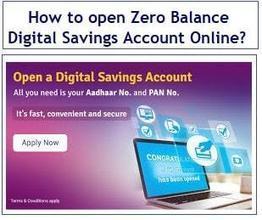What was once considered an outdated approach, direct mail marketing has recently regained popularity, especially following the effects of the pandemic. Many consumers have responded positively, appreciating the personal touch and feeling valued by the businesses they support. This strategy has become an important part of the “new normal” in marketing, and it’s worth considering how it could fit into your own advertising plan.
Pros and Cons of Direct Mail Marketing
Deciding whether direct mail marketing is worth integrating into your marketing plan depends on your business goals. Are you a start-up with little online presence trying to attract attention? Have you just opened a store in your community and want to spread the word? Is your audience more likely to respond to printed materials? Can your target customers be reached more effectively through the mailbox than the internet? These are key questions to address when developing a direct mail strategy.
Advantages of Direct Mail Advertising
For smaller local businesses or companies with a clearly defined audience, direct mail offers several benefits:
Cost-Effective: Direct mail can be a more budget-friendly option compared to certain digital advertising methods. The return on investment can be achieved quickly, often after the first delivery, unlike digital ads which may require multiple rounds of campaigns to see similar results.
Personalized Experience: Many customers perceive direct mail as a personal message from a brand they like. Studies show that a significant percentage of recipients feel excited to receive retail mail about new products and promotions.
Targeted Reach: Direct mail enables businesses to focus on specific audiences—whether it’s an existing customer base, a local region, or a particular community. In some cases, it allows direct placement into mailboxes for highly localized campaigns.
Trust-Building: Unlike email offers that might be mistaken for spam, physical mail can help strengthen trust. Sending printed discounts or promotions can create a stronger sense of credibility and sincerity, which is especially valued in today’s marketing environment.
Increased Visibility: For businesses without a strong online presence, direct mail may be one of the most effective ways to get noticed. It can quickly reach customers and help increase foot traffic to a store or location.
Disadvantages of Direct Mail Advertising
Despite its advantages, there are potential drawbacks to consider:
Can Be Perceived as Spam: Without thoughtful wording and design, direct mail can be seen as junk mail. The content must clearly show value to persuade recipients to engage.
Risk of Redundancy: Sending mail too frequently can cause annoyance and lead recipients to ignore future communications. Careful planning is needed to ensure only relevant messages are sent to selected audiences.
Viewed as Outdated: In a fast-moving digital world, some people may see direct mail as an old-fashioned marketing method.
Environmental Concerns: As sustainability becomes a greater priority, sending large volumes of printed materials may be viewed as wasteful or environmentally harmful by certain audiences.
Direct Mail Marketing Examples
When implementing a direct mail strategy, creativity can make a significant difference in attracting attention and encouraging engagement. Examples of effective approaches include:
- Interactive Mail: Sending a creative piece of mail that reveals a hidden message or effect when interacted with can encourage recipients to share their experience with others.
- Playful Messaging: Using humor or an unexpected twist to introduce a product can generate buzz and encourage customers to redeem offers.
- Engagement Through Action: Designing mail that prompts recipients to physically interact with it—such as by revealing a message or simulating a real-life scenario—can increase conversion rates.
Conclusion
In the post-pandemic marketing landscape, direct mail can help businesses connect with their audiences in a more personalized and memorable way. By combining thoughtful targeting with creative execution, this approach can build brand awareness, increase sales, and demonstrate genuine appreciation for customers.














